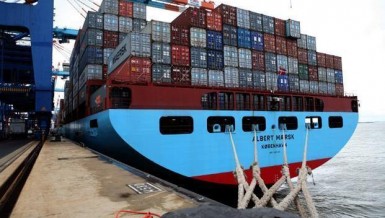
The Petrochemicals and Fertilisers Export Council members have accepted a decrease in value for export incentives for the period 2014-2017 at a council meeting held on Monday.
Under the new system, the incentives have been divided to cover basic incentives linked to the percentage of local components in the exports. There are five additional incentives determined by the activeness, location, inventiveness, and export markets associated with the export facility.
The value of the subsidies for exporting companies providing items with local components will decrease from 10% to 5% if the percentage of the local component is 70% or more.
It will reduce to 9% to 4.5% for a local component percentage between 60% and 70%; 8% to 4% for products that have a local component between 50% and 60%; and 6% to 3% for a local component percentage between 40% and 50%.
Companies that do not have more than 40% of local components in their product will not receive any subsidies.
For the five additional incentives, if the facility is located in Upper Egypt or along the borders, it will receive up to 1% of additional support. If the facility is limited to exports, which value less than $1m, it will receive up to 1% of additional support, while the facilities whose exports value between $1m and $2m will receive 0.5% support.
A company that has succeeded in breaking into new markets with an absence or weakness of Egyptian exports will also receive up to 1% of additional support. Twelve overseas markets in the chemical industry, including China, Germany, Canada, Turkey, India, the Netherlands, Japan, Brazil, Poland, Thailand, Russia, and the Czech Republic have been identified as lacking Egyptian exports.
These countries accounted for approximately 33% of global imports in the chemical and fertilizer sector, but the share of Egyptian exports does not exceed 0.1%. The export council has added African countries to the export incentive programme while also continuing the subsidies that support shipments to these countries.
The fourth additional incentive will give up to 1% in additional support to export facilities that have demonstrated innovative trends. The last incentive is an operational incentive, with facilities offering wages between 10% and 20% of total operational costs, up to 0.25% of additional support will be given.
Up to 0.5% of additional support will be given to facilities whose wage payments make up between 20% and 30% of their operational costs. Up to 1% of support will be given to facilities whose wage system takes up 30% or more of their total operational costs.
The new system also differentiates between facilities located inland and those in free zones. The latter, whose percentage of local components is 70% or more, will receive up to 2.25%, and decrease to 2%, 1.75%, and 1.25% in proportion with the decreasing percentage of the local component.
Facilities in free zones are able to exploit the system of subsidies for their own benefit, sometimes receiving double the subsidies they are warranted.
“How do these companies have the right to enjoy the benefits of duty-free access to subsidies twice? They receive subsidies for the first time, and export their products within the free zone to another company owned by a friend or relative,” said an attendee who preferred to remain anonymous at the council meeting. “Then they receive subsidies when they export within the region or to other locations. This is corruption.”
The attendee added: “The ministry laughs at us when it comes to some of these amendments, because they can’t be applied on the ground and control the money behind the subsidies – they’re just on paper. There are many difficulties faced by the younger [companies] to receive these subsidies… They are constantly rigged to support the older [companies].”
In this framework, the members of the council demanded that all facilities whose exports do not exceed a value of EGP 1m be allowed to take advantage of the subsidies without restriction.
The Export Council has revealed that the actual amount available in the Export Subsidies Fund for the new fiscal year is EGP 1.6bn. It has arrears to companies that value at EGP 1bn.



